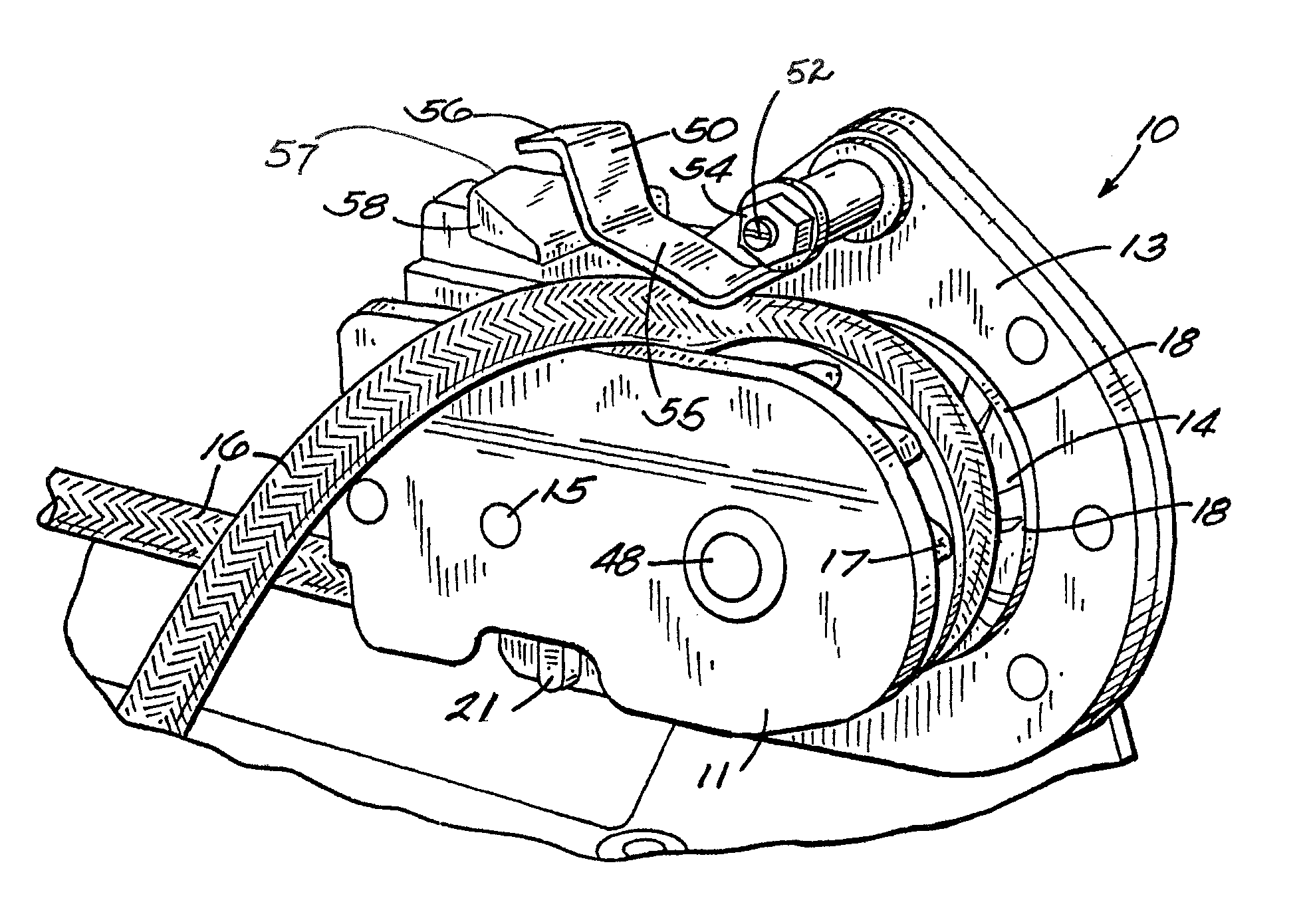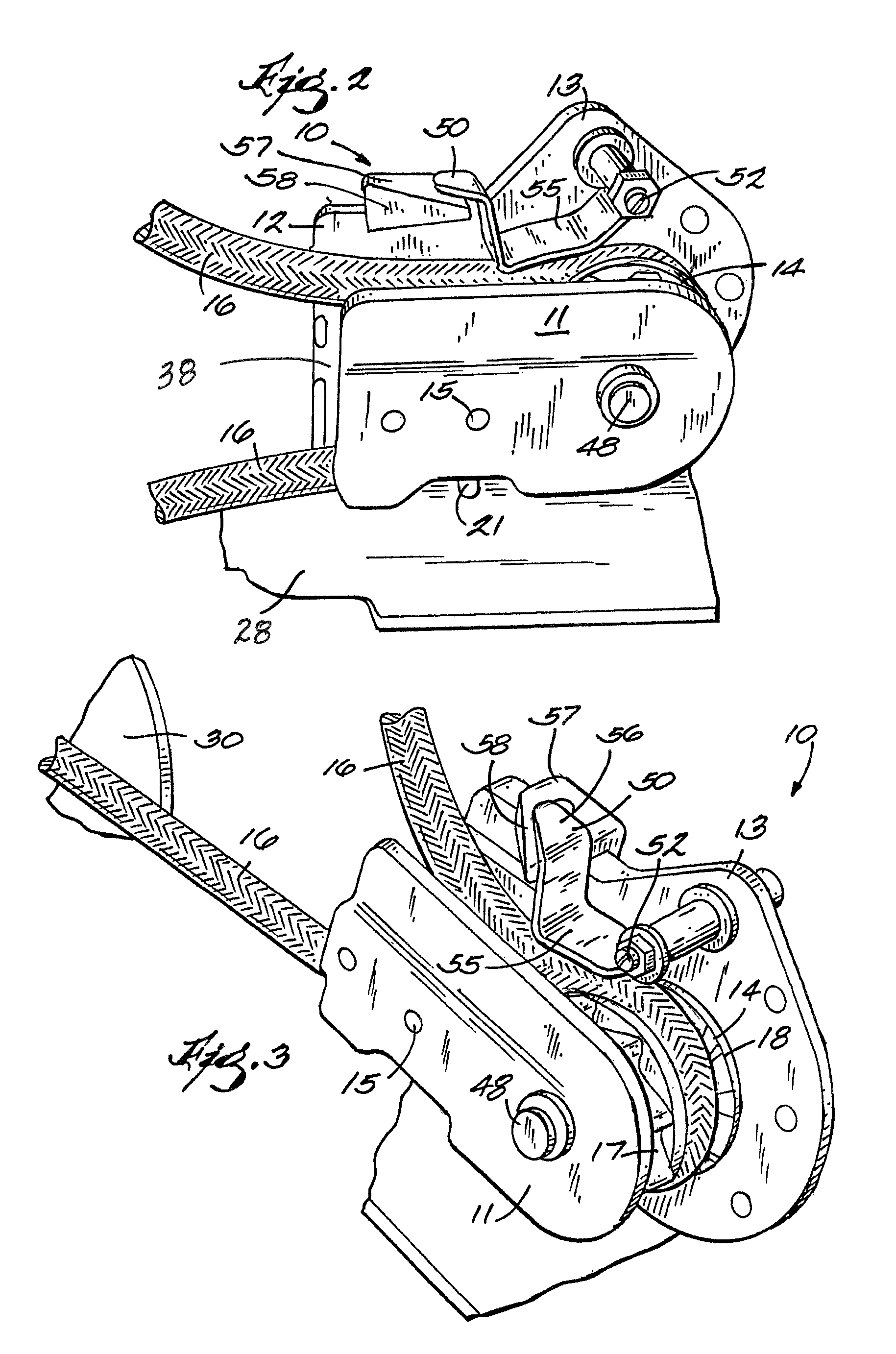Winch
a winch and sleeve technology, applied in the field of sleeve, can solve problems such as problems such as problems such as stumbling a rope from the sheave, and achieve the effect of preventing damage or minimizing the damage to the spring
- Summary
- Abstract
- Description
- Claims
- Application Information
AI Technical Summary
Benefits of technology
Problems solved by technology
Method used
Image
Examples
Embodiment Construction
[0014]Referring more specifically to the drawings, preferred embodiment of winch 10, intended to be tightened by a hand crank 18, is shown in FIG. 1. Device 10 includes a housing 12 formed from divisible halves 11 and 13 which are attached together as seen in FIG. 2 by conventional mechanical fasteners such as threaded bolts 15. Rotatably held within housing 12 is a sheave 14. Sheave 14, for ease of manufacture, is formed from halves 17 and 18. Halves 17 and 18 may be threaded together as shown in my earlier mentioned patents. Alternatively, each half can be threaded onto a threaded shaft 48 as shown.
[0015]The winch 10 can be attached to a suitable surface on a trailer 22, for example, a vertical member 26 or alternatively on a horizontal member. In FIG. 1 a bracket 28 is used for that purpose. Boat 20 is loaded on the trailer in conventional fashion and connected to a ball hitch 24 of a towing motor vehicle by means of a clamp member 25 as is also conventional. The inner face of ea...
PUM
 Login to View More
Login to View More Abstract
Description
Claims
Application Information
 Login to View More
Login to View More - R&D
- Intellectual Property
- Life Sciences
- Materials
- Tech Scout
- Unparalleled Data Quality
- Higher Quality Content
- 60% Fewer Hallucinations
Browse by: Latest US Patents, China's latest patents, Technical Efficacy Thesaurus, Application Domain, Technology Topic, Popular Technical Reports.
© 2025 PatSnap. All rights reserved.Legal|Privacy policy|Modern Slavery Act Transparency Statement|Sitemap|About US| Contact US: help@patsnap.com



